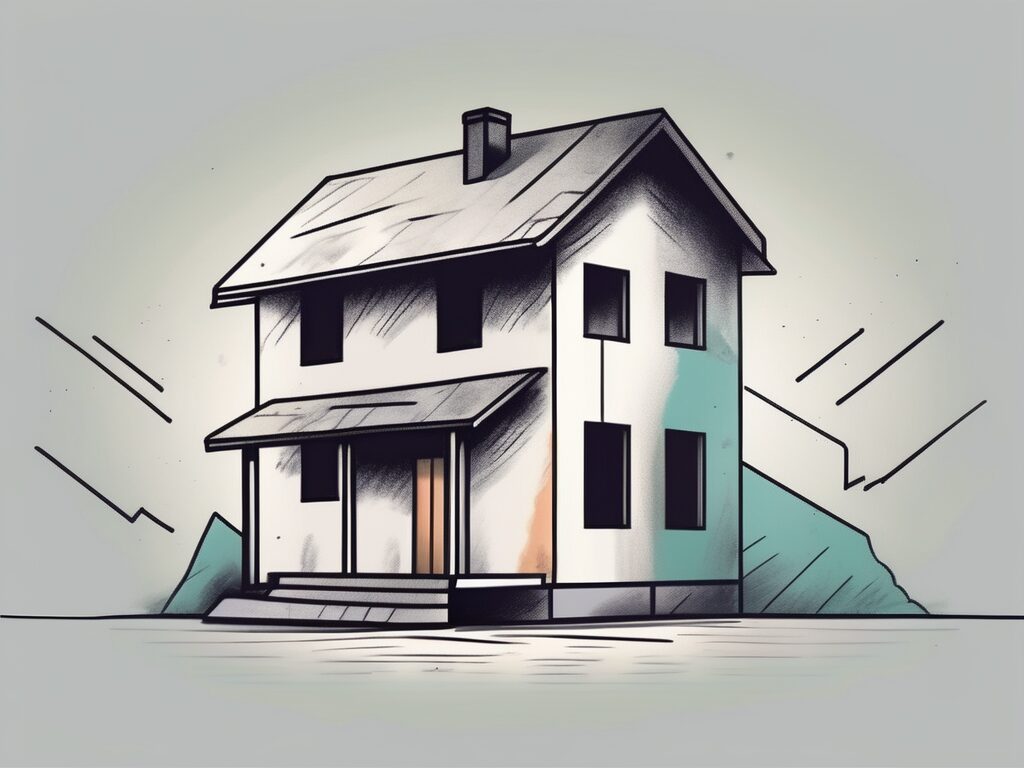
Agent A-Team or Solo Superhero? Finding the Right Real Estate Partner for Your Selling Journey in Wildwood Florida
When it comes to selling your home in Wildwood, Florida,…
January 29, 2024
Private Mortgage Insurance (PMI) is a term that frequently arises in conversations about homeownership and mortgages. For many homeowners, PMI can be a significant monthly expense that adds to the overall cost of their mortgage. However, there are ways to cancel PMI and save money in the long run. In this article, we will explore the different aspects of PMI, understand how it affects your mortgage, and discuss the steps to cancel PMI. By the end of this article, you will have a clear understanding of PMI and be equipped with the knowledge to potentially eliminate this extra expense.
Before delving into the specifics of PMI cancellation, it is crucial to understand the concept of Private Mortgage Insurance. PMI is an insurance policy that protects the mortgage lender in case the homeowner defaults on their loan. This insurance is typically required by lenders when the down payment is less than 20% of the home’s purchase price.
Private Mortgage Insurance, as the name suggests, is insurance provided by private companies. It acts as a safeguard for lenders against potential losses if borrowers fail to make their mortgage payments. When lenders perceive an increased risk due to a lower down payment, they require PMI to mitigate their exposure.
Private Mortgage Insurance works by transferring the risk of default from the lender to the insurance company. In the event that a homeowner defaults on their mortgage, the insurance company will reimburse the lender for a portion of the outstanding loan balance. This arrangement provides lenders with a layer of protection, allowing them to offer mortgage financing to borrowers with smaller down payments.
It is important to note that PMI is not the same as homeowner’s insurance. While homeowner’s insurance protects the homeowner against property damage and liability, PMI specifically safeguards the lender’s interests. Homeowner’s insurance is typically a requirement for all homeowners, regardless of the down payment amount.
PMI plays a significant role in homeownership, allowing individuals with smaller down payments to access mortgage financing. It expands the pool of potential homebuyers, making homeownership more feasible for many. However, it is important to note that PMI is an additional monthly expense that adds to the cost of the mortgage. Therefore, understanding how to cancel PMI can result in substantial savings.
When homeowners reach a certain equity threshold in their homes, they may be eligible to cancel their PMI. This threshold is typically achieved when the homeowner’s equity reaches 20% of the home’s value. However, some lenders may have specific requirements or guidelines for PMI cancellation, so it is essential to consult with the lender to understand the process.
There are several ways to reach the equity threshold required for PMI cancellation. One common method is through regular mortgage payments, which gradually reduce the loan balance and increase the homeowner’s equity. Another way is through appreciation in the home’s value. If the housing market experiences growth, the value of the home may increase, leading to a higher equity percentage.
It is important for homeowners to monitor their loan balance and track the value of their home to determine when they may be eligible to cancel PMI. By doing so, homeowners can potentially save hundreds of dollars each month, as PMI premiums will no longer be required.
Additionally, refinancing the mortgage can be another avenue to eliminate PMI. If homeowners have built significant equity in their homes or if the property has appreciated in value, refinancing the mortgage can help remove the PMI requirement. However, it is crucial to carefully evaluate the costs and benefits of refinancing before proceeding.
In conclusion, understanding PMI and its role in homeownership is essential for borrowers who are subject to this insurance requirement. By comprehending how PMI works and the options available for PMI cancellation, homeowners can make informed decisions that can lead to long-term financial savings.
Loan-to-Value Ratio (LTV) is a crucial factor in determining the need for Private Mortgage Insurance (PMI) and its subsequent cancellation. LTV is the percentage obtained by dividing the loan amount by the appraised value of the property. This ratio provides lenders with an assessment of the risk they are taking by lending money for a particular property.
Let’s dive a little deeper into how LTV affects your mortgage and the need for PMI. When you apply for a mortgage, the lender will evaluate the LTV to determine the level of risk associated with the loan. A higher LTV indicates a higher risk for lenders, as it means that the borrower has less equity in the property. As a result, lenders often require borrowers with higher LTVs to obtain PMI.
Private Mortgage Insurance is an insurance policy that protects the lender in case the borrower defaults on the loan. It provides an added layer of security for the lender, allowing them to recover a portion of the outstanding loan balance if necessary. PMI is typically required when the LTV exceeds 80%.
Understanding how LTV is calculated and monitoring its progress can help homeowners take appropriate steps to eliminate PMI and reduce their monthly expenses. When the LTV reaches 80%, homeowners generally have the right to request PMI cancellation. This means that if you have been diligently paying off your mortgage and the value of your property has increased, you may be able to eliminate the additional cost of PMI.
It’s important to note that the LTV can change over time due to various factors. One of the key factors is the appreciation of the property’s value. As the value of the property increases, the LTV decreases, which can open up opportunities for PMI cancellation. Additionally, making extra payments towards the principal balance of your mortgage can also help reduce the LTV.
Regularly monitoring your LTV can be beneficial, especially if you believe that the value of your property has increased significantly. In such cases, you may consider getting a new appraisal to determine the current value of your home. If the appraisal shows a lower value than expected, it might be worth waiting for the market to improve before requesting PMI cancellation.
Furthermore, it’s essential to keep track of your mortgage payments and ensure they are being applied correctly. Any errors or discrepancies in the calculation of your LTV could affect your ability to cancel PMI when you reach the 80% threshold.
In conclusion, understanding the concept of Loan-to-Value Ratio (LTV) is crucial for homeowners who want to eliminate the need for Private Mortgage Insurance (PMI). By monitoring your LTV, making extra payments towards your mortgage, and staying informed about the value of your property, you can take appropriate steps to reduce your monthly expenses and potentially eliminate the need for PMI altogether.
Obtaining PMI cancellation requires meeting specific criteria and fulfilling certain conditions. The following sections will outline the various scenarios in which homeowners can pursue PMI cancellation.
Homeowners can benefit from automatic PMI cancellation when their Loan-to-Value (LTV) reaches 78%. At this point, the homeowner is no longer required to pay PMI, and the mortgage payment is reduced accordingly. It is important to be aware of this automatic cancellation and keep track of LTV to take advantage of this opportunity to save money.
When the LTV reaches 78%, it signifies that the homeowner has built significant equity in their property. This equity is the difference between the current market value of the home and the outstanding mortgage balance. As the homeowner pays down the mortgage and the property value appreciates, the LTV decreases, eventually reaching the threshold for automatic PMI cancellation.
Reaching the 78% LTV milestone can be a significant achievement for homeowners. It not only relieves them of the burden of paying PMI but also provides a sense of financial security and increased net worth. Homeowners should regularly monitor their LTV to ensure they are on track to reach this milestone and take advantage of the automatic PMI cancellation.
While automatic PMI cancellation occurs at 78% LTV, homeowners can also proactively request PMI removal at 80% LTV. Making this request allows homeowners to free up funds by eliminating the monthly PMI payment. However, it is crucial to understand the process and requirements for requesting PMI removal to ensure a smooth transition.
Requesting PMI removal at 80% LTV requires homeowners to demonstrate that they have a strong payment history and meet the lender’s guidelines. Lenders may require proof of timely mortgage payments, a good credit score, and an appraisal to determine the current value of the property. It is essential to gather all the necessary documentation and follow the lender’s instructions to increase the chances of a successful PMI removal request.
Homeowners should also consider the potential savings from PMI removal at 80% LTV. Eliminating the monthly PMI payment can free up funds that can be used for other financial goals, such as paying off debt, saving for retirement, or investing in home improvements. It is important to weigh the benefits against any costs associated with the PMI removal process to make an informed decision.
Another option to consider when aiming to cancel PMI is to request a new appraisal on your property. If the reassessed value results in an LTV of 80% or lower, homeowners can qualify for PMI removal. It is essential to factor in the cost of a new appraisal and weigh it against the potential long-term savings before pursuing this avenue.
A new appraisal involves hiring a professional appraiser to evaluate the current market value of the property. The appraiser will consider factors such as the location, size, condition, and recent sales of comparable properties in the area. If the reassessed value is favorable and results in an LTV of 80% or lower, homeowners can present this information to their lender to request PMI removal.
Reappraising the home to eliminate PMI can be a strategic move for homeowners who believe that the property’s value has increased significantly since the original appraisal. However, it is important to note that there is a cost associated with hiring an appraiser. Homeowners should carefully evaluate the potential savings from PMI removal against the expense of the appraisal to determine if it is a financially viable option.
Refinancing your mortgage offers an opportunity to eliminate PMI. By refinancing to a loan with a lower interest rate or a higher equity stake, homeowners can potentially achieve an LTV below 80% and eliminate the need for PMI. However, it is essential to carefully evaluate the costs associated with refinancing and compare them to the potential savings.
When refinancing, homeowners replace their existing mortgage with a new loan that has more favorable terms. This can include a lower interest rate, a shorter loan term, or a different loan type. If the new loan results in an LTV below 80%, homeowners can request PMI cancellation.
Refinancing to eliminate PMI can be a smart financial move if the savings from a lower interest rate or a shorter loan term outweigh the costs associated with refinancing, such as closing costs and fees. Homeowners should consider factors such as the current interest rate environment, their credit score, and their long-term financial goals before deciding to refinance for PMI cancellation.
For homeowners who neither meet the criteria for automatic cancellation nor wish to refinance their loan, there may be an opportunity to eliminate PMI midway through the mortgage term. This option requires meeting specific requirements, such as a solid payment history. Understanding the conditions and timeline for mid-term PMI elimination can be valuable for managing mortgage expenses.
Mid-term PMI elimination typically involves a review of the homeowner’s payment history and the LTV at a specific point in time, usually around the halfway mark of the loan term. If the homeowner has consistently made on-time payments and the LTV is below a certain threshold, they may be eligible to request PMI removal.
Homeowners should consult their lender or mortgage servicer to understand the specific requirements and guidelines for mid-term PMI elimination. It is important to maintain a solid payment history, keep track of the LTV, and be proactive in requesting PMI removal if the conditions are met. Eliminating PMI midway through the loan term can provide significant savings and improve the overall affordability of homeownership.
Beyond the Loan-to-Value (LTV) thresholds and various scenarios outlined above, there are additional requirements homeowners must fulfill to cancel Private Mortgage Insurance (PMI). Understanding these requirements and how to meet them is crucial for homeowners looking to eliminate this additional expense. Let’s dive deeper into the steps and conditions necessary for PMI cancellation.
Each scenario for PMI cancellation comes with its specific steps and requirements. It is important to follow these steps meticulously and provide the necessary documentation to ensure a successful PMI cancellation process. Consulting with the mortgage lender or a financial advisor can simplify the process and help homeowners navigate through the requirements.
For example, one of the steps may involve gathering financial documents such as tax returns, pay stubs, and bank statements to demonstrate financial stability and meet the lender’s criteria for PMI cancellation. Additionally, homeowners may need to fill out specific forms provided by the lender to initiate the cancellation process.
By following the outlined steps and seeking professional guidance, homeowners can streamline the PMI cancellation process and potentially save a significant amount of money over time.
A good payment history is vital when pursuing PMI cancellation. Timely payments and a consistent record of meeting all financial obligations demonstrate financial responsibility and minimize the risk associated with homeownership. Maintaining a positive payment history is key to successfully canceling PMI.
Homeowners should strive to make all mortgage payments on time and in full. Late payments or a history of delinquency can hinder the PMI cancellation process. Lenders typically require a certain number of consecutive on-time payments before considering PMI cancellation.
It is important to note that even if the LTV ratio falls below the required threshold, a poor payment history may still prevent homeowners from canceling PMI. Therefore, maintaining a strong payment record is essential for homeowners who wish to eliminate this additional cost.
When aiming to cancel PMI, homeowners must ensure there are no additional liens on the property. Secondary liens, such as home equity loans or lines of credit, can complicate the cancellation process and require additional negotiations with the lenders holding these liens.
Conducting a thorough check of existing liens and addressing any outstanding issues is crucial for a smooth PMI cancellation. Homeowners may need to request lien releases or work with the secondary lienholders to satisfy their requirements before proceeding with PMI cancellation.
By ensuring there are no secondary liens on the property, homeowners can eliminate potential roadblocks and increase their chances of successfully canceling PMI.
Some lenders require a loan to be ‘seasoned’ before allowing PMI cancellation. This means that a certain period must pass, often two years, before homeowners can initiate the PMI cancellation process.
Understanding the seasoned loan requirement and how it impacts the timing of PMI cancellation can help homeowners plan ahead and capitalize on the opportunity to eliminate this expense. Homeowners should be aware of the specific seasoning period required by their lender and keep track of the time elapsed since the loan origination.
During the seasoning period, homeowners can focus on meeting other requirements for PMI cancellation, such as maintaining a good payment history and monitoring the LTV ratio. Once the seasoning period is over, homeowners can take the necessary steps to request PMI cancellation and potentially reduce their monthly mortgage payments.
In conclusion, Private Mortgage Insurance (PMI) can be a financial burden for homeowners. Understanding how to cancel PMI and save money on your mortgage is essential for financial well-being. By comprehending the requirements, monitoring the Loan-to-Value Ratio (LTV), and fulfilling the necessary conditions, homeowners can potentially eliminate this additional monthly expense.
Whether through automatic cancellation, requesting removal, refinancing, or taking advantage of mid-term opportunities, diligent homeowners can find ways to reduce costs and improve their financial situation. By following the outlined steps and consulting with professionals, homeowners can take control of their mortgage and save money in the long run.

If you want the Richr team to help you save thousands on your home just book a call.
 Book a call
Book a call